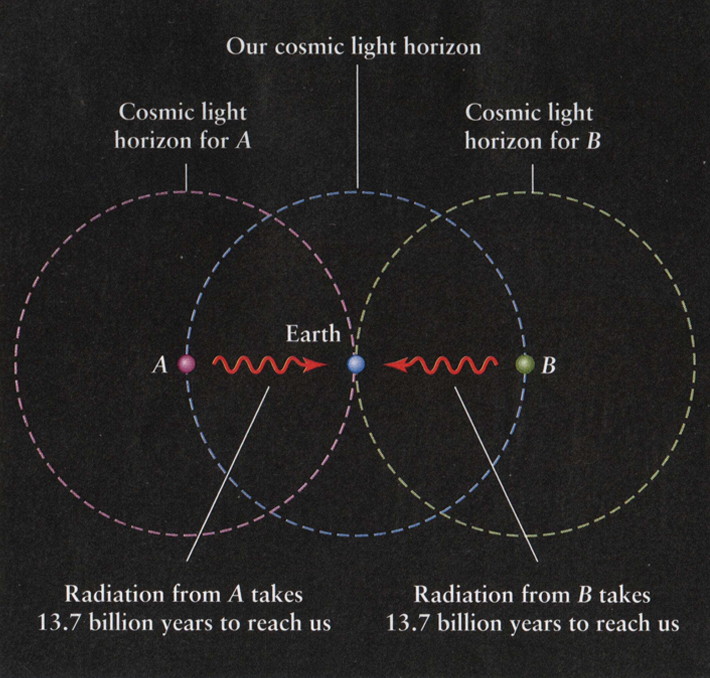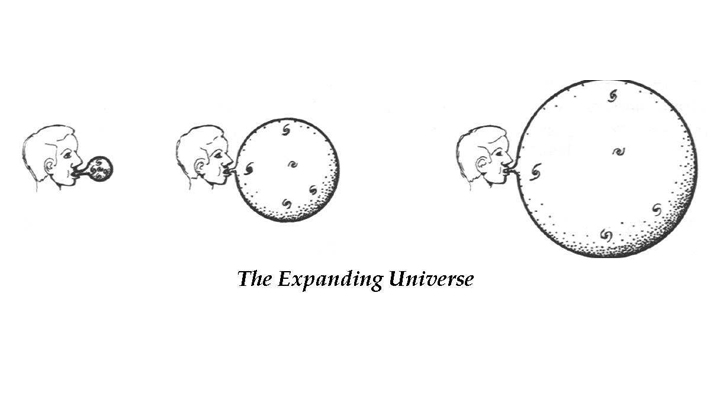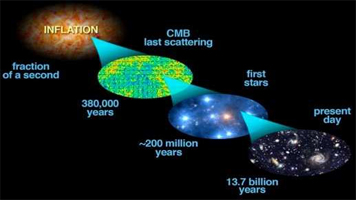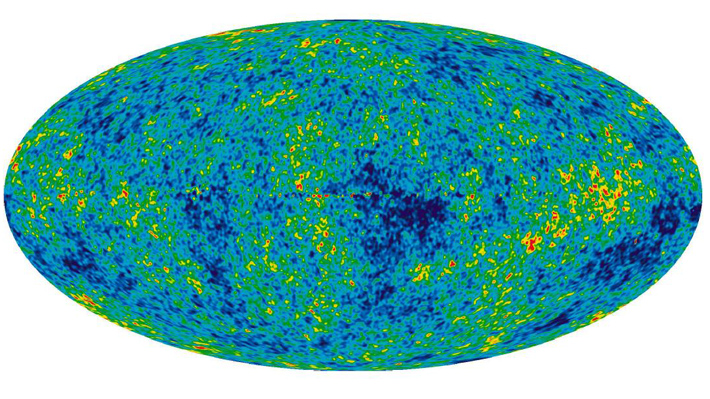Introduction
The inflationary Universe
According to the theory of inflation, the early Universe expanded exponentially fast for a fraction of a second after the Big Bang. Cosmologists introduced this idea in 1981 to solve several important problems in cosmology.
One of these problems is the horizon problem. Assume, for a moment, the Universe is not expanding. Now imagine a photon was released very early in the Universe and travelled freely until it hits the North Pole of the Earth. Now imagine another photon was released at the same time, but "opposite" to the first one. It will hit the Earth at the South Pole. Could these two photons exchange any information from the time when they are released? Clearly not, because the time required to send information from one photon to the other would be two times the age of the Universe. The photons are causally disconnected. They are outside of each other's horizon.

These photons could not have communicated with each other unless inflation took place during the very early Universe
However, we observe that photons from opposite directions must have communicated somehow, because the cosmic microwave background radiation has almost exactly the same temperature in all directions over the sky.
This problem can be solved by the idea that the Universe expanded exponentially for a short time period after the Big Bang. Before this period of inflation, the entire Universe could have been in causal contact and equilibrate to a common temperature. Widely separated regions today were actually very close together in the early Universe, explaining why photons from these regions have (almost exactly) the same temperature.
A simple model for the expansion of the Universe is to consider the inflation of the balloon. A person at any point on the balloon might consider themselves to be at the centre of the expansion, as all neighbouring points are getting further away.

As the balloon inflates, the distances between objects on the surface of the balloon increases
During inflation, the Universe expanded by a factor of about e60=1026. This number is a one followed by 26 zeros. It transcends normal political/economic discussions of inflation.
Quantum fluctuations
Let's suppose that before inflating the balloon, I write a message on the surface of the balloon which is so tiny that you cannot read it. Inflating the balloon will make the message readable for you. This means that inflation acts as a microscope, which magnifies what was written on the initial balloon.
In a similar manner we are able to observe quantum fluctuations that were created at the beginning of inflation. The expansion of the Universe during the inflationary epoch serves as a huge microscope that magnifies quantum fluctuations, corresponding to a scale less than 10-28cm, to cosmological distances. This leaves imprints in the cosmic microwave background radiation (hotter and colder regions) and in the distribution of galaxies.

Inflation works as a cosmic microscope to see the quantum fluctuations in the very early Universe
Using classical physics, the evolution of the inflationary Universe is homogeneous - each spatial point evolves exactly the same way. However, quantum physics introduces some uncertainty in the initial conditions for the different spatial points.
These variations act as seeds for structure formation. After the inflationary period, when fluctuations are amplified, the density of matter will vary slightly from place to place in the Universe. Gravity will cause the more dense regions to start contracting, leading to the formation of galaxies.
Probing the early Universe
The figure below shows how the image of quantum noise may appear imprinted on the cosmic microwave background. Red and blue denote hot and cold variations of the temperature, measured by the WMAP satellite over seven years. Comparing the statistics of the measured data with our theoretical calculations shows very good agreement.

WMAP
